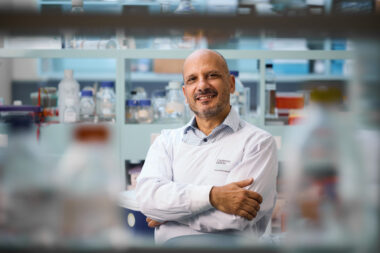In a discovery that challenges our understanding of Earth’s ancient history, researchers have found evidence suggesting that Earth may have had a ring system, which formed around 466 million years ago, at the beginning a period of unusually intense meteorite bombardment known as the Ordovician impact spike.
This surprising hypothesis, published in Earth and Planetary Science Letters, stems from plate tectonic reconstructions for the Ordovician period noting the positions of 21 asteroid impact craters. All these craters are located within 30 degrees of the equator, despite over 70 per cent of Earth’s continental crust being outside this region, an anomaly that conventional theories cannot explain.
The research team believes this localised impact pattern was produced after a large asteroid had a close encounter with Earth. As the asteroid passed within Earth’s Roche limit, it broke apart due to tidal forces, forming a debris ring around the planet—similar to the rings seen around Saturn and other gas giants today.
“Over millions of years, material from this ring gradually fell to Earth, creating the spike in meteorite impacts observed in the geological record,” said lead study author Professor Andy Tomkins, from Monash University’s School of Earth, Atmosphere and Environment. “We also see that layers in sedimentary rocks from this period contain extraordinary amounts of meteorite debris.”
“What makes this finding even more intriguing is the potential climate implications of such a ring system,” he said.
The researchers speculate that the ring could have cast a shadow on Earth, blocking sunlight and contributing to a significant global cooling event known as the Hirnantian Icehouse.”
This period, which occurred near the end of the Ordovician, is recognised as one of the coldest in the last 500 million years of Earth’s history.
“The idea that a ring system could have influenced global temperatures adds a new layer of complexity to our understanding of how extra-terrestrial events may have shaped Earth’s climate,” Professor Tomkins said.
Normally, asteroids impact the Earth at random locations, so we see impact craters distributed evenly over the Moon and Mars, for example. To investigate whether the distribution of Ordovician impact craters is non-random and closer to the equator, the researchers calculated the continental surface area capable of preserving craters from that time.
They focused on stable, undisturbed cratons with rocks older than the mid Ordovician period, excluding areas buried under sediments or ice, eroded regions, and those affected by tectonic activity. Using a GIS approach (Geographic Information System), they identified geologically suitable regions across different continents. Regions like Western Australia, Africa, the North American Craton, and small parts of Europe were considered well-suited for preserving such craters. Only 30 per cent of the suitable land area was determined to have been close to the equator, yet all the impact craters from this period were found in this region. The chances of this happening are like tossing a three-sided coin (if such a thing existed) and getting tails 21 times.
The implications of this discovery extend beyond geology, prompting scientists to reconsider the broader impact of celestial events on Earth’s evolutionary history. It also raises new questions about the potential for other ancient ring systems that could have influenced the development of life on Earth.
Could similar rings have existed at other points in our planet’s history, affecting everything from climate to the distribution of life? This research opens a new frontier in the study of Earth’s past, providing new insights into the dynamic interactions between our planet and the wider cosmos.
Media enquiries:
Silvia Dropulich
Marketing, Media & Communications Manager, Monash Science
T: +61 3 9902 4513 M: +61 435 138 743
E: [email protected]
General media enquiries:
Monash Media
T: +61 (0) 3 9903 4840
E: [email protected]
For more Monash media stories, visit our news and events site

